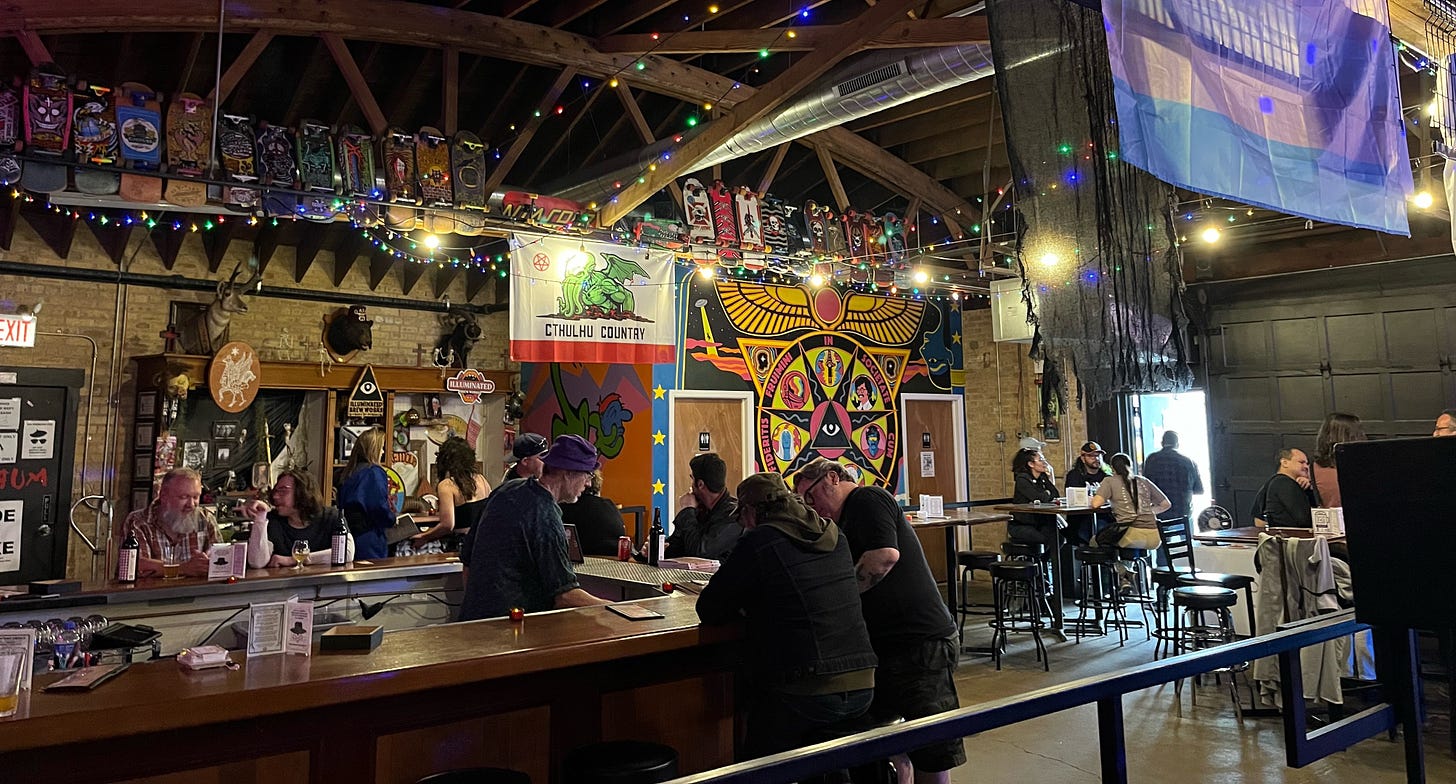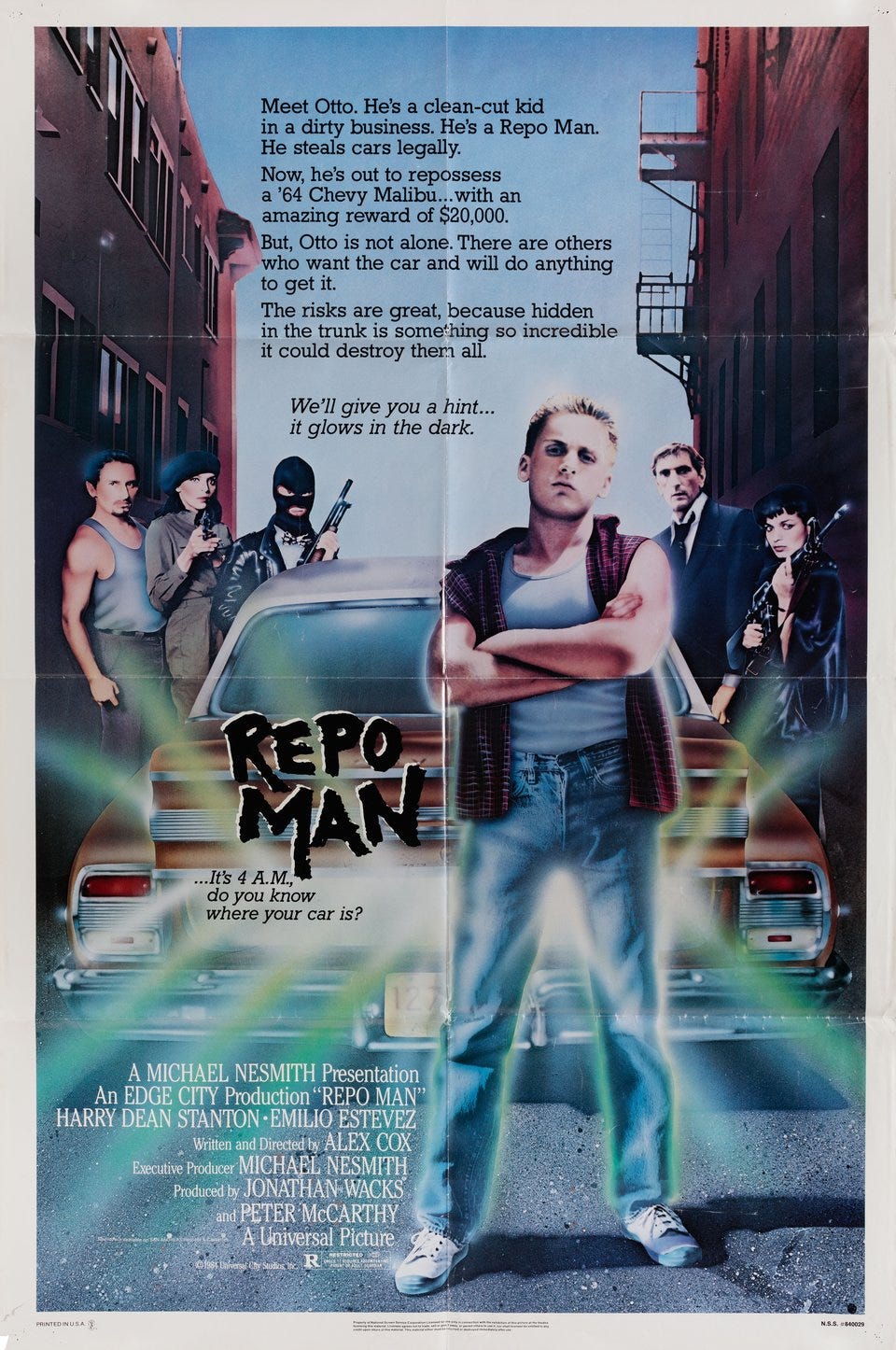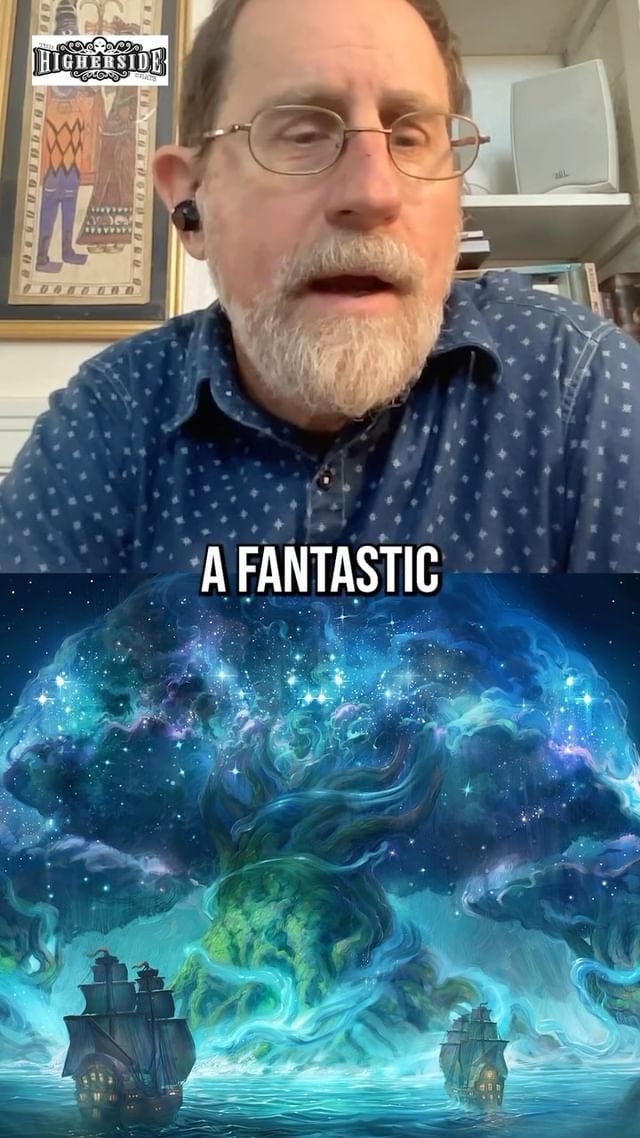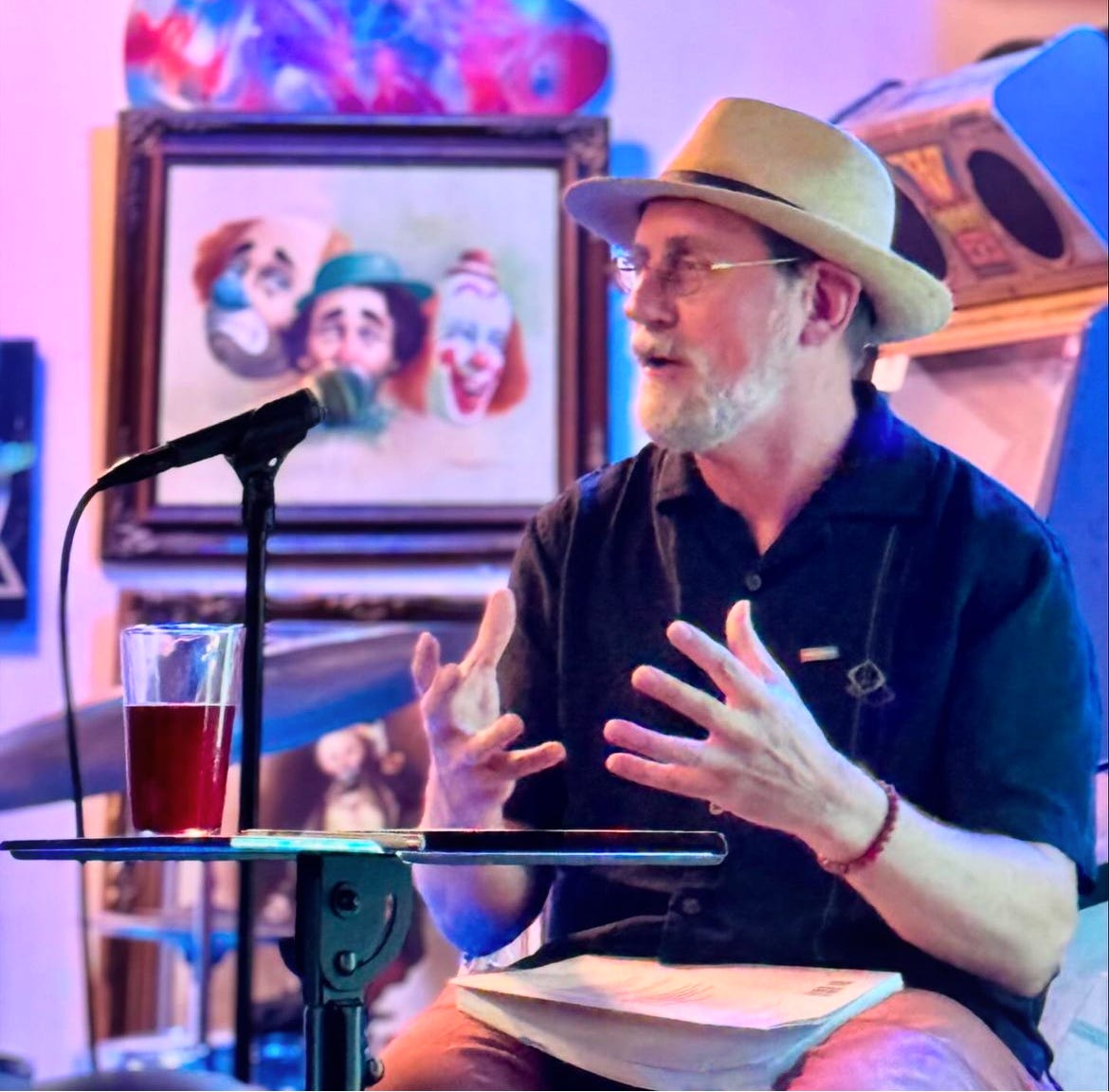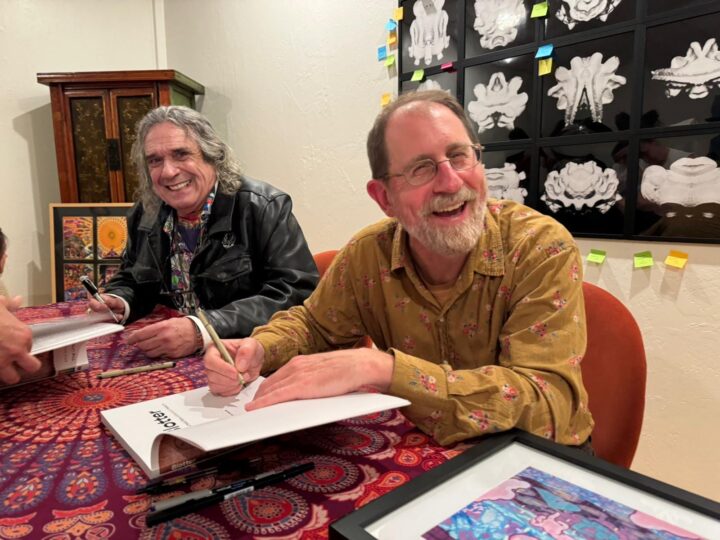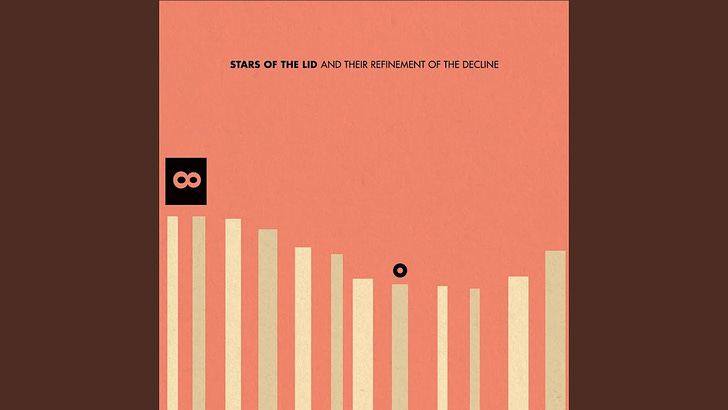
I just got back from ten days of touring Blotter out East, where I did events in Chicago, Cambridge, and New York. I had a blast. All my other books have been sleepers, judged to be classics, if that, long after their debut, but Blotter is moving along right out of the gate. And though I love bookstores and am fine with old-school bookstore readings — thank you Powell’s! — I am happy to say that none of the Blotter gatherings I just got back from involved bookstores. In New York, for example, I presented the book at The Psychedelic Assembly, a Midtown tripper community zone that hung an art show as part of the deal, and then signed books at the Blotter Bardo Bath, a live ambient-rock lightshow extravaganza thrown by the Psychedelic Sangha that I will let these guys describe.
In Chicago, I met up with Brian Buckman, whom I first encountered at Burning Man in the ragged, glorious years of the early 2000s, when we recorded an interview for the Viking Youth Power Hour radio show that was warped in all the right ways by afternoon shots and dubious powders. Over twenty years later we are still in touch. Brian is now one of the ascended masters behind Illuminated Brew Works, a brew pub and factory whose tasty suds stand out from the pack with their glorious hepcat occult invocations. Here was the setting for the reading, which featured a live tiki-rock band, penetrating questions, Midwestern freaks, and the appearance of a paper mache demon:
I knew that IBW had done a few brews with the Weird Studies boys, so I asked them to whip up a blotter brew, and they merrily complied. Don’t ask me, I haven’t tasted it yet!
Two days after the IBW reading I was at Harvard lecturing at the Center for the Study of World Religions, which is part of the Divinity School there. When I got my PhD a decade ago, departments of religion were not into drugs, but the psychedelic sea change has seeped into the humanities as well. CSWR is one of the nodes of Harvard’s Study for Psychedelics in Society and Culture, endowed to the tune of 16 mil, and one of the few academic research programs that approach psychedelics humanistically. A number of colleagues and pals work at CSWR, folks who bring their own metaphysical obsessions to bear on their scholarship in all manner of ways. These include Matthew Dillon, a gnostic scholar and Invisibles obsessive who recently interviewed me extensively for the CSWR podcast Pop Apocalypse.
The one-two punch of the Illuminated Brew Works and the Harvard Div School says something about the place of the psychedelic humanities these days, but it also speaks to a hi-lo game I have been playing consciously and somewhat self-indulgently since I was a teenager. In those years, I had a tacit agreement with my parents: as long as I maintained high grades and took A.P. classes, they allowed for a permissive “don’t ask don’t tell” space that in turn facilitated a miscreant druggy lifestyle of suburban adventure. This elite-margin frisson — itself a feature of privilege, I admit — has driven many of the choices in my peculiar Gen X career. It also characterizes a crucial feature of my style, which notoriously blends stoner slang and articulate critique. Responding to a piece about the Rainbow Gathering I wrote for the Voice in 1991, High Times pothead-in-chief Steven Hagar wrote me off as an “intellectual twit.” Fair enough, I guess, but I was an intellectual twit that dropped acid with Faeries at Rainbow Gatherings.
The weather over my recent trip provided various glimpses of the magic of early spring, and given the great friends and great food that greased the successful signings, I had, as I said, a blast. But I had something else as well: a tune in my head. Throughout the trip, on walks or in the cab or lying in an unfamiliar bed, my brain replayed the principal melody of “Dungtitled (in A major)”, the opening track on Stars of the Lid’s remarkable last recording, 2007’s And Their Refinement of the Decline.
The plaintive five-note melody opens the track, where it is seemingly played on a foghorn, and recurs a few times halfway through the piece on solo trumpet. What interests me in this tune — a classic Enoesque “naive melody” — is its subdued and almost resolute melancholy. Though the key is major — the A major of the title — the shape of the figure is itself in decline, and leaves you sadly if peacefully hanging there, at once resolved and not.
The refrain, as beguiling to me during my trip as Vinteuil’s “little phrase” was to Charles Swann, recalls another five-note trumpet phrase, from Charles Ives’ “The Unanswered Question.” In this justly famous piece, written in 1908, revised in the 1930s, and not really heard until the postwar period, a bed of ambient strings stages the titular question, asked again by solo trumpet. Clusters of strings and winds provide increasingly complex answers, but these only propel further iterations of the same bemused query, which Ives notes in the score is “The Perennial Question of Existence”.
There is something existential as well in the more resigned and simple Stars melody. At least this is how it felt to me, as I allowed the refrain to ask its own question as it recurred in my skull: why this particular melancholic air? Was it the notes that compelled, or the vibe? If the tune was just an ear worm, it was an ear worm whose success seemed dependent less on some neural grove of jingle-ready synapses than on the space the worm cored through my consciousness, a passageway that made room for an emotion to accompany me alongside my daily groove of pleasure, hassle, and distraction, but otherwise might have had nowhere to alight: a sustained sadness, a refined grief, like a cooing mourning dove.
The feeling did not exactly pop out of a void. While I have been feeling mostly positive and engaged these last months, it has not been an easy time for me and mine. A distant friend OD’d, an old crony lost his partner after years of suffering, and a younger pal lost his even younger wife to grueling cancer. A fellow whom I, my wife, and my in-laws had long considered a friend vindictively turned on us all, putting enormous stress on some core relationships — and practical living arrangements — in ways that seemed both cruel and crazy. Though the success of Blotter is a great satisfaction, the inevitable postpartum blues have arrived, a reminder of the flittering vanity of accomplishment. And of course the world has entered a doom loop of sorts, a metacrisis we seem to be processing with a public space as thoughtful and reflective as a hornet’s nest, even as the ordinary business of life grows more vexing and exposed, as ever more powerful technological platforms give ever fewer shits about human experience.
But all these are just reasons making moves on a mood. And reasons, I believe, are dodges from the core condition, which lies beyond both reasons and reason. Here I recall what Wallace Stevens writes in “Of Mere Being”, when he hears and sees a gold-feathered songbird:
You know then that it is not the reason
That makes us happy or unhappy.
The bird sings. Its feathers shine.
In other words, happiness and its lack arise from another dimension than the reasons we might turn to to explain it (including the explanations offered by “reason”). The bird, like the mood, sings on its own, closer to the acausal order of Being than a neat story with beginnings and endings. Reasons, from this perspective, are a dodge, and an obfuscating one as well. Casual stories — “I am unhappy because…” — hold out the possibility of solutions, and much of our agitation, hassle, and anger is bound up with implementing solutions, which also feed our addiction to ever-more targeted goods and services. But the grief in the picture, the grief playing trumpet in my mind, was asking for something else, not a set of explanations and solutions, but for simply a place to be, to roost, and to be heard.
My half resolved disquiet was given articulate voice on The Living Dark, a Substack written by horror author, essayist, and colleague-in-weirdness Matt Cardin. In a recent post entitled “The Consolation of No Exit,” Cardin quotes Leonard Cohen:
We live in a world that is not perfectible, a world that always presents you with a sense of something undone, something missing, something hurting, something irritating. From that minor sense of discomfort to torture and poverty and murder, we live in that kind of universe. The wound that does not heal — this human predicament is a predicament that does not perfect itself.
But there is the consolation of no exit, the consolation that this is what you’re stuck with. Rather than the consolation of healing the wound, of finding the right kind of medical attention or the right kind of religion, there is a certain wisdom of no exit: this is our human predicament and the only consolation is embracing it. It is our situation, and the only consolation is the full embrace of that reality.
But there is a further twist to this existential jiu-jitsu: how do we embrace the reality of no exit without succumbing to a cruel pessimism, or its vampire overlord, despair? How do we live with the wound? Especially if one’s heels are dogged by the black beast of depression, then one grows quite wary of sad strains in the mind. This, I came to see, was the question the Stars trumpet asked.
Weirdly, marvelously, an answer of sorts was provided by the musical character of the phrase in my head. Genre-wise, the tune belongs to a class of naïve and melancholic melodies — melandies, if you will — that waft their way through many classic ambient and related electronica tracks from the 1990s and early 2000s. While “Dungtitled” is a fully ambient track, I am thinking here of the more dynamic headphone stuffers awkwardly named “intelligent dance music” — a repulsive moniker that nonetheless recognized the existence of electronica with beats that functioned more like head music than dance music. And one of the more common features of such music — from Boards of Canada to μ-Ziq to Plaid to Seefeel to Autechre — is the layering of sad slow refrains over kinetic, even up-beat grooves.
Aphex Twin is the master of this. A fine example is his track “Ptolemy,” from the immortal Selected Ambient Works 85-92. The beats start out peppy, even as a few echolocation dollops suggest a larger field for the groove. Both the bass and midrange riffs enter in stride, strutting in a major key, and we just cruise down the avenue for a couple minutes until a slow, four-interval descending figure drifts down like astral fog; its mood is plaintive, even as the beat goes on. Around four minutes in, this melandy recurs, without interrupting the beat but now holding the floor of pitch. Even if we are off our faces on the dancefloor we have to pass through this poignant mist, with its chill air of loss and lament. But it’s those moments (beginning at 1:55 and 5:12) where the melody forms just one layer of an otherwise bopping groove sandwich that answers the Stars trump: sadness, like bitter herbs on a Seder table, offers depth and tang as the beat, and the groove, goes on.
I had another nibble of this layered affect sandwich at the Texas Eclipse Festival last month. Though the gathering got a lot of Fyre Festival press for closing early and for being something of a shit show, we still had a fine old time, navigating the margins of a rather crass enterprise where beer was far more available than water. We spent most of our time in environments built by friends, whether geodesic image-spheres or tea shalas, but our favorite space was the brainchild of our old pal Harlan Gruber, the maker of some of my favorite Burning Man structures and the author of a far-out book on sacred geometry called Portal to the New Earth. Inspired by that marvelous 1:11 Sapphire Portal that appeared on the playa years ago, the azure Sky Portal was a compact, elegant, and serene structure: a 12-sided bowl, eight feet high and eighteen feet in diameter. After you passed through the small entrance, the space invited you to take a seat, and lean against walls that were pitched perfectly to inspire relaxed attention. The portal opened to the sky, but the frame was visible enough in the eye to evoke the magic of a James Turrell skyspace. On our first night there, lasers and lightworks shot from the major stages played off a canvas of little fluffy clouds.
Gruber is a master of rigging environmental sound, but instead of his usual Quasar Wave Transducer — an analog feedback drone device — the Sky Portal hosted a vivid recording of Tibetan bowls that seemed to permeate the space. Boundaries grew diaphanous. The overtones produced by the bowls already blur the distinction between inside and outside your skull, even as the open structure of the portal invited sounds from outside the plywood bowl: conversations, distant shouts and laughter, thumping beats loosing their low frequencies from faraway stages. The whole ambient soundfield was a mix, which meant that amidst all the brouhaha of a festival in full swing, the bells were still there, within and without, staging a state of consciousness, or rather a stateless no-zone of consciousness: an awake awareness that pervaded all the hustle and bustle with gentle shining immanence.
Relaxing there one night, somewhere between hypnagogia and anaesthetic psychedelia, I had an insight that has stayed with me like that little “Dungtitled” phrase from Stars of the Lid. The thought is this: given the state of things today, and almost certainly for the rest our lifetimes, our bodyminds are going to be regularly seized by some very dark and difficult emotions. But which emotions? Might we have a choice here, a knob of shadow to tune? There seem to be three principal monsters of the heart these days: hatred, fear, and a terrible sadness. There are reasons for all three, but only two — hatred and fear — are actively perpetuated by our sick capitalist communication webs. This should be a sign.
My insight was simple: whenever there is the choice, move from hatred or fear to the terrible sadness. Carry the heaviness rather than project it outward or tamp it down. And there is a further task as well, which is to temper the sadness — refine the decline — so that it does not sink into despair but floats like a hovering melody through the compassionate dispassion of transpersonal grief. Being alive today means being immersed in a sea of good-byes — to birds and beasts, to analog lifeways, to values and assumptions, to hopes and dreams. Fight for your cause if you will, and take on fears if it helps you prepare, but please do not forget to make space to mourn in real time. If you listen closely, you may hear that it is already with you.
Links
(•) Repo Man: Over at Hilobrow, I offer a short review of one of the great California flix of the 1980s. “It is only one of Repo Man’s many marvels that this deeply Californian cult film was directed by a visiting Englishman. Indeed, Alex Cox’s surreal and gritty clairvoyance is proof positive that the ‘special relationship’ comes supersized in Los Angeles, a city grokked and transformed by all manner of oddball Brits, from Aldous Huxley to Sex Pistols guitarist Steve Jones.”
(•) “The Bodies of Drugs Matter”: Over at the Psychedelic Review, Rob Dickins offers a kind and insightful review of my latest book Blotter: The Untold Story of an Acid Medium.
(•) Goodbye Steve Albini: Reading through all the great prose inspired by the life and death of Steve Albini, I dug out the one conversation I had with Albini, for my monster Arthur essay on Joanna Newsom’s Ys.
Newsom recorded her own performance for Ys with Steve Albini, who has recorded thousands of musicians and works strictly with analog. (Albini once offered this thunderous prophecy on the back of his old band Big Black’s Songs About Fucking: “the future belongs to the analog loyalists. fuck digital.”) Albini and Newsom met at LA’s slick Village Recording Studios, where Todd Rundgren was recording Meatloaf in the studio next door. Still, Albini had to go through five tape machines before getting one to work, and that one he had to fix himself. “It was a really embarrassing scenario,” says Albini. “Its not like we were in some cheap-shit chop shop. I’ve made records in people’s living rooms that went better from a technical standpoint.” Once he cobbled together a studio, Albini then faced the challenge of recording the harp. “It’s a quiet instrument. It doesn’t excite the room much, so you have to work close to it, but because it’s physically large you can’t just stick a mic up close to it.” Albini wound up placing four small Crown GLM mics, which are about the size of a kitchen match, along the instrument’s resonating belly. A nearby mic picked up the stereo image of Newsom playing, and a distant mic picked up the reverberant sound of the room. “It was fun,” says Albini, who enjoyed working with Newsom, a woman he describes simply as “bad ass.”
(•) A Higherside Chat: I had a long and rich discussion with Greg Carlwood over at the Higherside Chats. We talked a bit about Blotter, but mostly about other psychedelic topics, which he summarized as “LSD, Drug Portals, Psychedelic Animism, and the Alien Interface.” Greg pulled the following morsel from our conversation:
European Tour
Thursday, May 23: This week I will be presenting Blotter at the Hopscotch Reading Room in Berlin, Kurfürstenstraße 14/Haus B. The free event will take place outside, and will begin, weather permitting, at 7:30 pm. More info.
Thursday, May 30: I will be reading and discussing Blotter at the Camden Art Centre. There will be some classic blotter hanging on the walls, and no doubt some classics in the audience as well. The free event is already sold out, but there may be a waitlist.
Saturday, June 8: I will be delivering a keynote at the Interdisciplinary Conference on Psychedelic Research in the afternoon, entitled “Between God and Crime: the Legacy of the Underground.” The ICPR will be taking place at the PHIL, Haarlem, the Netherlands, June 6-8. More info.
Thursday, June 13: I will be reading and presenting Blotter in Amsterdam, one of the most important cities for the history of blotter. The event will take place at 8pm at the SPUI25 in the heart of the city, and will also include Ed Visser, an old-school Dutch blotter maker now co-running the Amsterdam Blotter Classics. More info.
I hope you enjoyed this flicker of Burning Shore. If you want to support my work, you are encouraged to consider a paid subscription, though for now I will not be offering any subscriber-only content. You can also support the publication by forwarding Burning Shore to friends and colleagues, or by dropping an appreciation in my Tip Jar.

